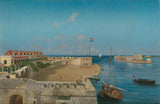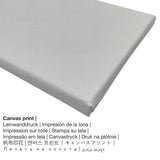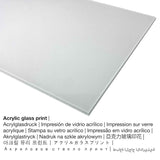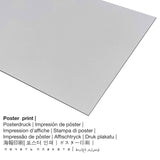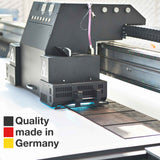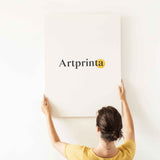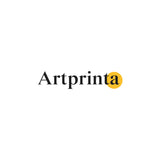Prosper Crébassol, 1858 - Ọnụ ụzọ ọdụ ụgbọ mmiri nke Willemstad na Obí Gọọmenti - ọmarịcha nka.
Ụtụ gụnyere. Mbupu gbakọrọ na ndenye ọpụpụ.
Nkọwa izugbe sitere na ụlọ ngosi nka (© Copyright - by Rijksmuseum - Rijksmuseum)
The painting shows the input port of Willemstad (the beginning of the St. Anna Bay), viewed from the three-storey town house adjoining warehouse, situated at the corner of the Handelskade and Breedestraat. Links between two bastions of Fort Amsterdam is the government building, the residence of the governor. Until 1861 this was also the meeting place of the Colonial Council and other colleges. In the middle of the government building is the entrance gate to Fort Amsterdam. In the middle of the background you can see the Water Fort, air guns, a flagpole flying the Dutch flag and an optical telegraph. In the foreground, the former weighing house, where the Savings and Lending Bank has been established since 1850. Above the gate hangs a green sign with the inscription: SAVINGS BANK. This gate opens onto the square in front of the government building. On the square are painted different people. Near the guardhouse of the Water Fort is a large amount of wood next to a cart. Waterfront bollards are distinguishable. An open sailing ship loaded with merchandise, and a small dinghy are moored to the quay, as well as a small tent boat. A longboat rowing ten sailors and two officers just left the dock. Riffort the right background is a part of the Reef, which is the leper colony. The round building for Riffort is built in 1831-1832 pivot cottage capstan, which served to stretch a chain at the entrance of St. Anna Bay in times of war danger.
Data ndabere na akụkụ nka pụrụ iche
| Aha nka: | "The harbor entrance of Willemstad with the Government Palace" |
| Nhazi nka: | sere |
| Otu izugbe: | nkà nke oge a |
| Century: | 19th narị afọ |
| Emepụtara n'afọ: | 1858 |
| Ogologo afọ nka nka: | ihe dị ka afọ 160 |
| Egosiputara na: | Rijksmuseum |
| Ebe ngosi nka: | Amsterdam, Netherlands |
| Webụsaịtị ihe ngosi nka: | Rijksmuseum |
| Ụdị ikike nka: | ngalaba ọha |
| Site n'aka: | Rijksmuseum |
Tebụl nyocha nke onye na-ese ihe
| Aha onye nka: | Ọganihu Crébassol |
| Gender: | nwoke |
| Ọrụ nke onye na-ese ihe: | onye na-ese ihe |
| Otu nka: | omenkà nke oge a |
Nkọwapụta ihe
| Nkewa ngwaahịa: | nka nka |
| Mmeputakwa: | dijitalụ mmeputakwa |
| Usoro mmepụta: | mbipụta dijitalụ |
| Nlụpụta: | arụpụtara na Germany |
| Ụdị ngwaahịa: | na mmepụta ihe |
| Eji ngwaahịa emebere: | mgbidi mgbidi, mgbidi ndozi |
| Nhazi nka nka: | usoro odida obodo |
| Oke akụkụ: | 3: 2 |
| Mmetụta akụkụ: | ogologo bụ 50% ogologo karịa obosara |
| Akụrụngwa ị nwere ike ịhọrọ site na: | ígwè ebipụta (aluminium dibond), acrylic glass print (nwere ezigbo mkpuchi iko), mbipụta akwa akwa, mbipụta akwụkwọ mmado (akwụkwọ kwaaji) |
| Nha n'arọwa n'elu ihe ndọtị (mbipụta akwa akwa): | 30x20cm - 12x8", 60x40cm - 24x16", 90x60cm - 35x24", 120x80cm - 47x31", 150x100cm - 59x39" |
| Mpempe iko acrylic (nwere ezigbo mkpuchi iko) nha: | 30x20cm - 12x8", 60x40cm - 24x16", 90x60cm - 35x24", 120x80cm - 47x31", 150x100cm - 59x39" |
| Mbipụta akwụkwọ mmado (akwụkwọ kwaaji): | 60x40cm - 24x16", 90x60cm - 35x24", 120x80cm - 47x31" |
| Ụdị nha ebipụta aluminom: | 30x20cm - 12x8", 60x40cm - 24x16", 90x60cm - 35x24", 120x80cm - 47x31" |
| Nhazi mbipụta nka: | oyiri nka na-enweghị isi |
Họrọ ihe gị
In the product dropdown menu you can select your prefered size and material. Choose your favorite size and material among the subsequent choices:
- Mbipụta iko acrylic (nke nwere ezigbo mkpuchi iko): The print on acrylic glass, often described as a UV print on plexiglass, will turn an artwork into magnificient home décor and offers a great alternative to canvas or dibond fine art prints. Your favorite artwork will be custom-made with the help of modern UV print machines. It makes deep, vibrant colors. With an acrylic glass fine art print contrasts and also small color details become more visible with the help of the subtle tonal gradation.
- Mbipụta kwaaji: A canvas print, not to be confused with a real canvas painting, is a digital copy printed on a cotton canvas. Also, a canvas print produces a homelike, pleasant ambience. Canvas prints are relatively low in weight, which implies that it is easy to hang up your Canvas print without additional wall-mounts. Because of thata canvas print is suitable for any type of wall.
- Aluminom ihe eji eme ihe: An Aluminium Dibond print is a material with an outstanding effect of depth. The Aluminium Dibond Print is the excellent introduction to the sophisticated world of fine art reproductions on alu. For your Direct Print On Aluminum Dibond, we print the selected artwork on the aluminium composite white-primed surface. The bright & white parts of the artpiece shimmer with a silk gloss, however without any glare.
- Akwụkwọ mmado ebipụtara (akwa akwa akwa): A poster print is a UV printed flat cotton canvas with a slight surface finish. Please bear in mind, that depending on the size of the canvas poster print we add a white margin 2-6cm round about the painting, which facilitates the framing with a custom frame.
In 1858 Ọganihu Crébassol tee ihe a 19th narị afọ masterpiece. The piece of art is in the the Rijksmuseum's nchịkọta dijitalụ. Nke a nkà nke oge a ngalaba ọha a na-enye masterpiece site n'ikike nke Rijksmuseum.Also, the work of art has the creditline: . On top of that, alignment is odida obodo na nwere akụkụ ruru nke 3: 2, nke pụtara na ogologo bụ 50% ogologo karịa obosara.
Disclaimer: We try to depict our products as accurately as possible and to exhibit them visually in our shop. Nonetheless, the colors of the printed materials, as well as the print result can diverge to a certain extent from the image on the monitor. Depending on your settings of your screen and the quality of the surface, color pigments can unfortunately not be printed one hundret percent realistically. Because all our fine art prints are printed and processed by hand, there might as well be slight deviations in the size and exact position of the motif.
© nwebisiinka, Artprinta (www.artprinta.com)

